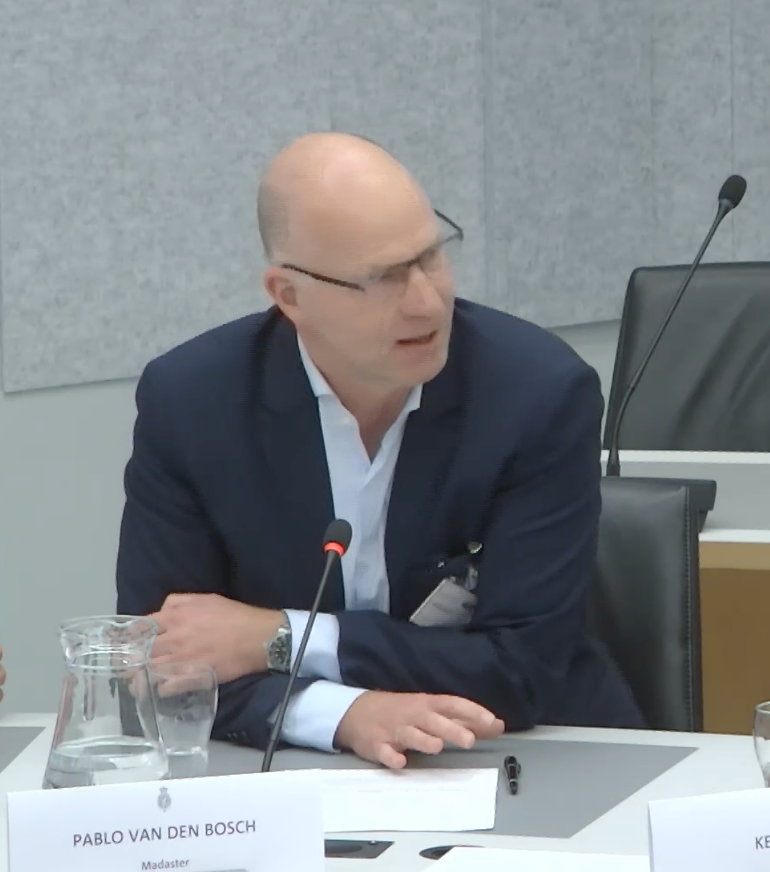It’s about our ‘licence to operate’
Alexander Happ, CEO and founder of ASSIDUUS, on holistic ESG architecture, investment risks, the importance of Article 9 impact funds and the growing need for recyclable building materials.
Everyone talks about ESG criteria, but what environmental or social benefits could such criteria realise in practice?
ESG, first and foremost, is a modern approach to assessing the risks that arise from non-compliance or violation of sustainability standards. This involves both challenges related to ecological sustainability (E for Environment) and demands new social sustainability (S for Social) and principles of good corporate management (G for Corporate Governance). In the case of the real estate sector, the focus is on mitigating CO2 emissions in manufacturing and throughout the entire life cycle of a building, in order to achieve a turnaround in climate change. Densification and impervious surface areas in open spaces are equally critical issues in real estate development, and since affordable housing is considered one of the biggest social issues at the moment, the S of ESG is also of particular importance to the industry. It is about affordability, public welfare, inclusiveness, and return on investment, as well as being a credible player beyond that. The real estate sector must make a good and meaningful contribution to society’s future responsibilities, otherwise it will lose its social ‘licence to operate’. For project developers, this means providing projects with enhanced or new qualities. For this purpose, we have developed a real estate-related ESG architecture that expands E, S and G with additional fields of action and criteria. E focuses on the fields of climate action, resources and nature. The direct contribution to a turnaround in climate change is, thus, enhanced by our consideration of resource use in the criteria of materials, water and waste, and by our consideration of nature in the criteria of urban climate and biodiversity. In dimension S, we focus on the involvement of users, community and suppliers. Overall, this means that we significantly reduce the investment risk in all three areas, even in the long term.
You decided to take the slightly more complicated path and go directly for an Article 9 Fund. Why?
We founded ASSIDUUS 2019 with the idea to create ecologically sustainable and public welfare-oriented projects, which is stated in our articles of association. As such, reliable ESG criteria form the basis of our business model. By categorising the risks of an investment that has an impact on the future, such as regarding climate change, social tensions and a politically effective awareness of these issues amongst citizens, the criteria can also determine economic success. This is the basis for the investment capability in our approach.
Those who are addressing a balance of the three criteria and who are developing E, S and G, holistically, both in the building itself and in their business activities, will also be developing projects that go beyond the requirements of Article 8 and have the impact of an Article 9 fund. Therefore, this question was never an issue for us.
What role does the selection of materials and construction elements in your projects play for the fund, and what importance do you attribute to the recycling of materials and construction elements?
The CO2 life cycle assessment of an investment initiates an in-depth examination of the building elements, their materiality and their recyclability. Timber instead of concrete may be the obvious solution, because it addresses the largest mass of material in construction. But it all depends on the detachability of building materials. Many of them are glued, poured or in other ways fixed, so that dismantling for the purpose of reuse does not seem feasible with today’s technology.
Therefore, in our opinion, a change in the selection of building elements is of crucial importance. In some areas, we are already seeing a high level of agility in the supplier industry for building materials and elements to meet these new requirements. We can therefore already choose from a number of building elements that have been optimised in line with the CO2 life cycle and are recyclable, or are already being used by the supplier as recycled building elements.
Where do you think the real estate industry will have positioned itself in terms of ESG, in five years’ time?
Just as society’s awareness of the risks that can be categorised in the areas of E and S is increasing, and companies that lack ‘good governance’ are losing their business basis, so is its significance in the real estate sector. Monetary policy after the financial crisis led to an inflation of assets. For example, real estate and parties trading in this sector were given an advantage, but they have not proven themselves to offer solutions on the E, S and G issues. The time has now come to make up for this. I assume that, seeing the great diversity of the real estate industry, more companies will adopt these new fields of action in the future and will have incorporated ESG criteria into good new real estate products and solutions, in as little as five years. Others will wait and see, rejecting E, S and G risks as inappropriate until the EU’s New Deal is coupled with EU taxonomy regulation or the lack of acceptance for their products, eventually, forces them down this path. We are convinced that the aspects of ESG relevant to the turnaround in climate change, in particular, will be considered part of the standard. in five years’ time. This applies in particular to the CO2 impact of our actions and the resulting attention for building materials and their recyclability. That’s why we became a Madaster Kennedy at a very early stage.
Company description
ASSIDUUS is an investor developer that exclusively develops ESG-compliant projects, creates them through the associated fund and subsequently manages them sustainably.
For this purpose, Robert-Christian Gierth, Alexander Happ and IDEAL Versicherung a.G. founded ASSIDUUS Development in 2019 and ASSIDUUS Vermögensverwaltung together with Goesta Ritschewald in early 2020, both based in Berlin.
Today, the company employs 11 people, covers all project development, construction management, sustainability and fund competencies and manages a project development volume of around EUR 300 million as a developer as well as a centrally located office project with over 40,000 sqm GFA.
The fund ‘ASSIDUUS ESG Urban Office I’ received its approval for distribution at the end of 2021 as the first office real estate impact fund according to Article 9 of the Disclosure Regulation (EU) 2019/2088.




